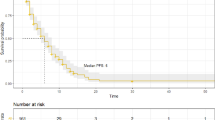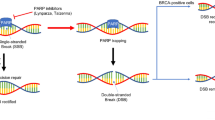Abstract
Objective
To observe the effect of Shugan Liangxue Decoction (舒肝凉血方, SGLXD) on estrogen receptor α (ERα) in human breast cancer cells.
Methods
The effect of SGLXD (0.85–5.10 mg/mL) on the proliferation of breast cancer cells were evaluated by 3-(4,5-dimethyl-2-thiazolyl)-2,5-diphenyl-2-H-tetrazolium bromide (MTT) assay. The nuclear ERα protein levels in MCF-7, T47D and ZR-75-1 cells which treated by SGLXD for 24 h were examined by western blot and immunofluorescence assay. MCF-7 and MDA-MB-231 cells were treated by 17β-estradiol (E2) with or without SGLXD, for 24 h, and the E2 targeted genes c-myc and bcl-2 protein product was evaluated by western blot.
Results
SGLXD showed dose-dependent inhibition on the proliferation of MCF-7, T47D and ZR-75-1 cells, but did not inhibit the proliferation of MDA-MB-231 cells. Furthermore, the promotive effect on cell growth induced by E2 was also significantly inhibited by SGLXD treatment. With the treatment of 1.70, 3.40, 5.10 mg/mL SGLXD, the nuclear ERα protein level was reduced to 88.1%, 70.4% and 60.9% in MCF-7 cells, and was decreased to 43.0%, 38.4% and 5.9% in ZR-75-1 cells as compared with the control group. In T47D cells, the nuclear ERα protein was down-regulated to 51.3% and 4.3% by 3.40 and 5.10 mg/mL SGLXD treatment. The down-regulative effect of SGLXD on nuclear ERα was confirmed by immunofluorescence assay. SGLXD decreased the protein product of c-myc and bcl-2.
Conclusions
SGLXD may exhibit selective inhibition effect on the proliferation of ER positive breast cancer cells. SGLXD reduced the nuclear ERα expression and the protein product of E2 target gene c-myc and bcl-2.
Similar content being viewed by others
References
Chen S. Aromatase and breast cancer. Front Biosci 1998;3:d922–d933.
Bocchinfuso WP, Korach KS. Mammary gland development and tumorigenesis in estrogen receptor knockout mice. J Mammary Gland Biol Neoplasia 1997;2:323–334.
Plaza-Menacho I, Morandi A, Robertson D, Pancholi S, Drury S, Dowsett M, et al. Targeting the receptor tyrosine kinase RET sensitizes breast cancer cells to tamoxifen treatment and reveals a role for RET in endocrine resistance. Oncogene 2010;29:4648–4657.
Roman-Blas JA, Castañeda S, Largo R, Herrero-Beaumont G. Osteoarthritis associated with estrogen deficiency. Arthritis Res Ther 2009;11(5):241.
Zhu J, Zhao C, Kharman-Biz A, Zhuang T, Jonsson P, Liang N, et al. The atypical ubiquitin ligase RNF31 stabilizes estrogen receptor α and modulates estrogen-stimulated breast cancer cell proliferation. Oncogene 2014;33:4340–4351.
Osborne CK, Schiff R. Estrogen-receptor biology: continuing progress and therapeutic implications. J Clin Oncol 2005;23:1616–1622.
Ambrosino C, Tarallo R, Bamundo A, Cuomo D, Franci G, Nassa G, et al. Identification of a hormone-regulated dynamic nuclear actin network associated with estrogen receptor α in human breast cancer cell nuclei. Mol Cell Proteomics 2010;9:1352–1367.
Jordan VC. The secrets of selective estrogen receptor modulation: cell-specific coregulation. Cancer Cell 2002;1:215–217.
Wakeling A. Similarities and distinctions in the mode of action of different classes of antioestrogens. Endocr Relat Cancer 2000;7(1):17–28.
Early Breast Cancer Trialists’ Collaborative Group. Tamoxifen for early breast cancer: an overview of the randomised trials. Lancet 1998;351:1451–1467.
Fisher B, Costantino JP, Redmond CK, Fisher ER, Wickerham DL, Cronin WM. Endometrial cancer in tamoxifen-treated breast cancer patients: findings from the National Surgical Adjuvant Breast and Bowel Project (NSABP) B-14. J Natl Cancer Inst 1994;86:527–537.
Howell A, Robertson JF, Quaresma Albano J, Aschermannova A, Mauriac L, Kleeberg UR, et al. Fulvestrant, formerly ICI 182,780, is as effective as anastrozole in postmenopausal women with advanced breast cancer progressing after prior endocrine treatment. J Clin Oncol 2002;20:3396–3403.
Dauvois S, White R, Parker MG. The antiestrogen ICI 182780 disrupts estrogen receptor nucleocytoplasmic shuttling. J Cell Sci 1993;106:1377–1388.
Jeong HJ, Shin YG, Kim IH. Pezzuto JM inhibition of aromatase activity by flavonoids. Arch Pharm Res 1999;22:309–312.
Li F, Ye L, Lin SM, Leung LK. Dietary flavones and flavonones display differential effects on aromatase (CYP19) transcription in the breast cancer cells MCF-7. Mol Cell Endocrinol 2011;344:51–58.
Indran IR, Zhang SJ, Zhang ZW, Sun F, Gong Y, Wang X, et al. Selective estrogen receptor modulator effects of epimedium extracts on breast cancer and uterine growth in nude mice. Planta Med 2014;80:22–28.
Fu XS, Li PP. Shu-Gan-Liang-Xue decoction simultaneously down-regulates expressions of aromatase and steroid sulfatase in estrogen receptor positive breast cancer cells. Chin J Cancer Res 2011;23:208–213.
Li PP, Wang W, Xie YQ. In vivo effect of Shu-Gan-Liang-Xue decoction on estrogen. Chin J Oncol 2003;25:445–447.
Zhang Y, Li PP. Shu-Gan-Liang-Xue Decoction, a Chinese herbal formula, down-regulates the expression of steroid sulfatase genes in human breast carcinoma MCF-7 cells. J Ethnopharmacol 2010;127:620–624.
Heldring N, Pike A, Andersson S, Matthews J, Cheng G, Hartman J, et al. Estrogen receptors: how do they signal and what are their targets. Physiol Rev 2007;87:905–931.
Huang B, Qu Z, Ong CW, Tsang YH, Xiao G, Shapiro D, et al. RUNX3 acts as a tumor suppressor in breast cancer by targeting estrogen receptor α. Oncogene 2012;31:527–534.
Clarke M. Meta-analyses of adjuvant therapies for women with early breast cancer: the Early Breast Cancer Trialists’ Collaborative Group overview. Ann Oncol 2006;17(suppl 10):x59–x62.
Carlson RW. The history and mechanism of action of fulvestrant. Clin Breast Cancer 2005;6:S5–S8.
Dubik D, Dembinski TC, Shiu RP. Stimulation of c-myc oncogene expression associated with estrogen-induced proliferation of human breast cancer cells. Cancer Res 1987;47(24 Pt 1):6517–6521.
Dong L, Wang W, Wang F, Stoner M, Reed JC, Harigai M, et al. Mechanisms of transcriptional activation of bcl-2 gene expression by 17β-estradiol in breast cancer cells. J Biol Chem 1999;274:32099–32107.
Author information
Authors and Affiliations
Corresponding author
Additional information
Supported by the National Natural Science Foundation of China (No. 30973906)
Now the author is working in the Department of Oncology, Beijing Ditan Hospital, Capital Medical University, Beijing (100015), China
Rights and permissions
About this article
Cite this article
Zhou, N., Han, Sy., Chen, Yz. et al. Shugan Liangxue Decoction (舒肝凉血方) Down-Regulates Estrogen Receptor α Expression in Breast Cancer Cells. Chin. J. Integr. Med. 24, 518–524 (2018). https://doi.org/10.1007/s11655-015-2123-4
Accepted:
Published:
Issue Date:
DOI: https://doi.org/10.1007/s11655-015-2123-4




